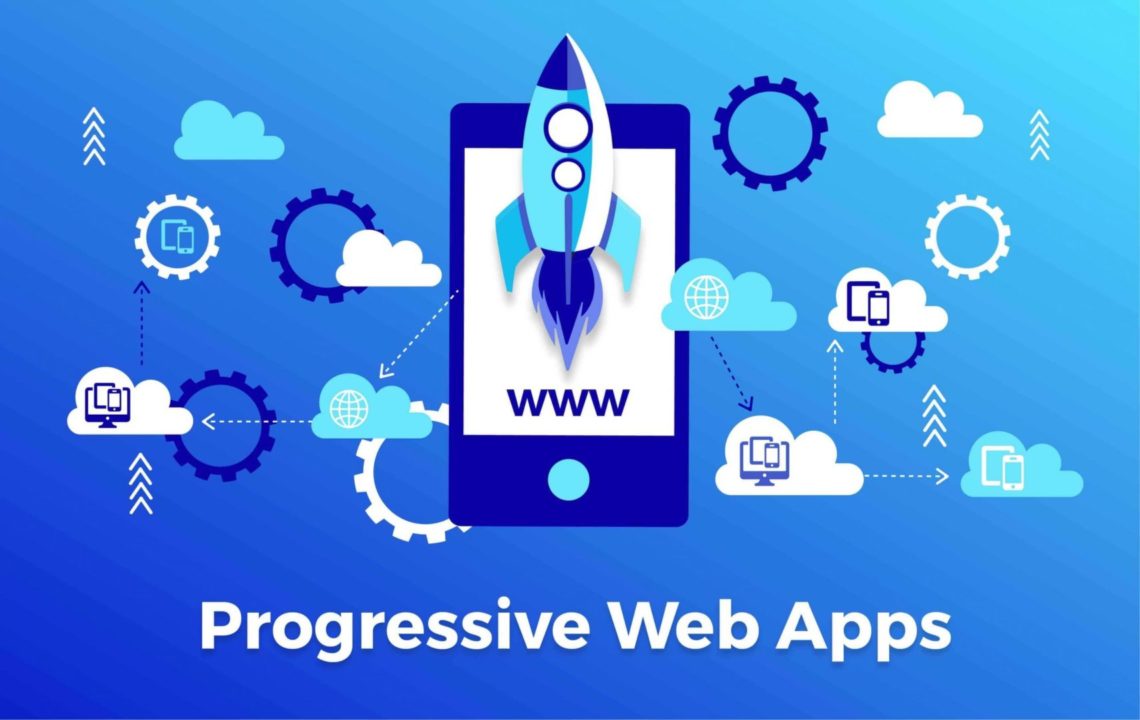November 30th, 2020
Category: Innovation,Web Applications
No Comments
Posted by: Team TA

We all are familiar with a wide variety of application software both used on the web as well as on mobile phones. Web applications can reach anyone, anywhere, and on any device with the help of a single search engine. Also, platform-specific applications like mobile applications feel to be part of the device they run on giving users the best experience of their features within the device. So in general, it is established that the web applications have the best reach and platform applications represent the best of capabilities. What if we could bring both these best qualities into a single application software? Here comes the latest and finest solution which delivers enhanced capabilities, reliability, and install ability on any device called the Progressive Web Applications.
Progressive web applications take advantage of the latest technologies to combine the premier web and mobile applications. In simple terms, it is a web application that acts as a mobile application. Progressive web apps take advantage of the much larger web ecosystem, plugins, and community and the relative ease of deploying and maintaining a website when compared to a native application in the respective app stores.
Why Progressive Web App?
Mobile application development has emerged from native application development to hybrid mobile application development which brings in the tagline of one code base for application on any OS platform in mobile. But this too is a tedious process as development takes a longer time. Many features have to be developed separately for each operating system, and the longest process of all is the deployment of apps in the app store. Web application development and deployment takes up only a lesser amount of time compared with mobile application development. This is an important factor where progressive web application comes into place. These applications can be developed as web applications and can be installed into devices as their native applications without going through all the process of a pure mobile application.
A progressive web application takes advantage of a mobile app’s characteristics, resulting in improved user retention and performance, without the complications of maintaining a mobile application. However, we cannot push mobile applications away as a well-designed mobile application consumes fewer data and is much faster because some resources reside on the device which no progressive web application can provide.
Features
- Progressive:
The app must work on any device and should enhance progressively on features available in the user’s device or browser. They integrate well with the web and are easily likable and also sharable like any website.
- Discoverable:
The PWA is easily discoverable in the search engine as they are also the website which gives them more advantage over mobile applications discovery in app stores
- App-like:
PWA looks like a native mobile application with a responsive design to fit any device and of any screen size.
- Connectivity-independent:
It works well within areas with low connectivity bringing in the feature of working offline like a mobile application rather than a web application
What makes a good Progressive Web Application?
A PWA is an application with enhanced capabilities, reliability, and install ability for anyone, anywhere, on any device. But what makes your application the best qualified PWA? Here are the checklist and recommendations that will guide you for it:
- Starts fast, stays fast: Speed is critical for getting users to use your app. Performance affects your entire experience, from how users perceive your application to how it performs. Always, high performing sites engage and retain users better than poorly performing ones therefore, web sites should focus on optimizing for a fast user experience.
- Works in any browser: Progressive Web Apps are web apps first, and that means they need to work across browsers, not just in one of them.
- Responsive to any screen size: Devices come in a range of sizes, and users may use your application at a range of sizes, even on the same device. Therefore, it’s critical to ensure your content not only fits within the viewport but that all features and content for your site are usable at all viewport sizes. Thus, designs have to be made responsive with the size of devices.
- Is installable: Installing a Progressive Web App allows it to look, feel, and behave like all other installed apps. It’s launched from the same place users launch their other apps. It runs in its app window, separate from the browser, and it appears in the task list, just like other apps.
When do we use Progressive Web Apps?
Should everyone simply build a PWA and be done with it? No, consider your business and — more importantly — your target audience. Applications cannot be developed as progressive web applications where high graphical quality performance is required like in some games and also in applications that use native device features like file access, SMS, and so on. Apps can be progressive applications where data connectivity is very expensive, and the users cannot afford it but the application requires features that need connectivity.
TA has proposed new solutions for some applications to be done as PWAs.
